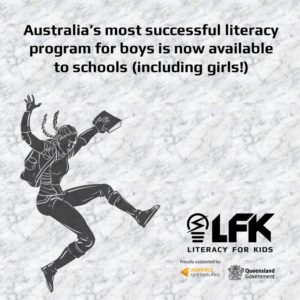Why boys are falling behind in school
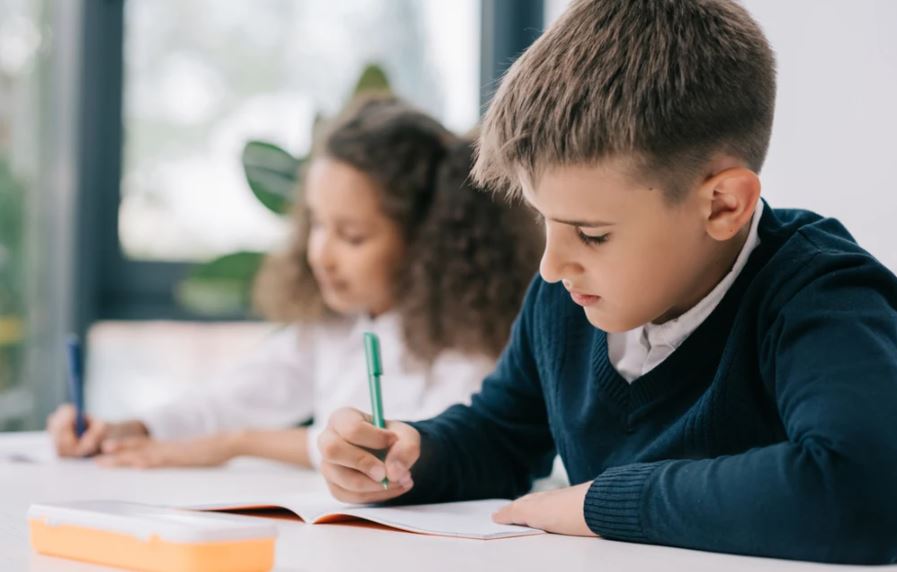
Sharing an article by Kevin Donnelly, Senior Research Fellow, Australian Catholic University, about the underachievement of boys in literacy.
The latest NAPLAN results demonstrating girls outperform boys in writing and reading illustrate the problem of boys underachieving. Boys’ underperformance is especially evident with year 9 writing, where only 81.6 per cent of boys reach the minimal level, compared with 90.8 per cent of girls.
Australian Curriculum, Assessment and Reporting Authority (ACARA), the body responsible for NAPLAN, describes the minimum standard as demonstrating “only the basic elements of literacy and numeracy at their year level”. If boys’ mastery of reading and writing is basic, many will find the standard expected at years 11 and 12 impossible to achieve.
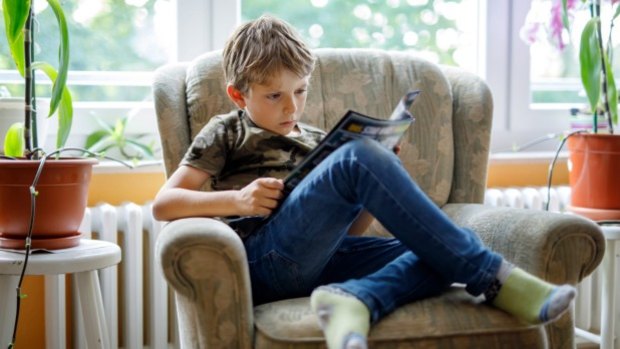
Boys, particularly at year 9 level, lag behind girls in reading and writing.CREDIT:SHUTTERSTOCK
Girls also outperform boys in reading across years 3, 5, 7 and 9, with the greatest disparity in year 9, where 93.3 per cent of girls reach the minimum standard compared with 87.3 per cent of boys.
While boys do marginally better than girls in numeracy, when it comes to spelling, grammar and punctuation, the situation is reversed. Once again, girls achieve stronger results. The problem of underachievement is also evident at the senior years.
This masthead’s Jordan Baker highlights the issue in her recent report “Boys falling far behind girls in HSC and at university”, where she quotes the University Admissions Centre concluding that being male was “greater than any other recognised disadvantages we looked at”.
Last year’s Victorian year 12 results also illustrate gender imbalance, where the average Australian Tertiary Admission Rank (ATAR) for girls was 70.6 compared with 67.62 for boys. In sought-after tertiary courses, the difference of a couple of points is critical.
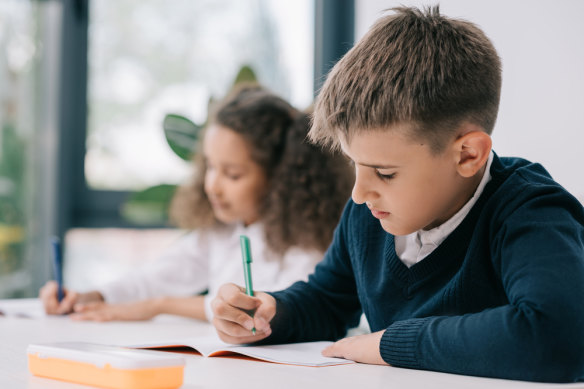
Boys perform marginally better in numeracy than girls. CREDIT:SHUTTERSTOCK
As noted by the Australian Bureau of Statistics, based on 2020 figures, while 88 per cent of girls stayed on to year 12, the figure for boys was only 79 per cent. And 92 per cent of women aged 20 to 24 had completed year 12 or certificate III or above, compared with 87 per cent of men.
While recent NAPLAN and ATAR results illustrate boys’ underperformance, the issue of gender imbalance is not a new one. In 2002, the then-minister for education, Brendan Nelson, commissioned an inquiry to investigate boys’ underachievement.
As noted by research undertaken by the OECD, Australian classrooms have long since adopted a more open-ended, inquiry-based and process approach to learning and classroom interaction, where teachers are facilitators and assessment is less judgemental.
The way reading is taught in the early years – where whole language has dominated, instead of the more structured and explicit phonics and phonemic awareness approach – best illustrates how current approaches to pedagogy better suit girls compared with boys.
Learning to read is not as natural and easy as learning to talk, and while girls often find the whole language, look-and-guess approach worthwhile, boys struggle and easily become anxious and frustrated.
In his book Boys and Girls Learn Differently, the American social philosopher and academic Michael Gurian makes the point – based on cognitive research and our understanding of brain development – that boys learn differently from girls, and this difference impacts what happens in the classroom.
Gurian suggests girls develop verbal and linguistic skills earlier than boys, are better able to articulate feelings and emotions earlier than boys, and that boys favour deductive thinking compared with inductive.
It is widely accepted that teachers act as mentors and are critical in influencing whether students are engaged and motivated. The fact that men constitute 22 per cent of the teacher workforce, with the figure falling to 16 per cent of primary school teachers, also helps explain boys’ underachievement.
As noted by Sydney academic and education expert Peter West, the dearth of male teachers impacts how boys view education and their willingness to engage and do well. There’s an affinity between boys and male teachers, especially at the primary school level, that helps boys in their emotional and intellectual development.
There needs to be greater emphasis on phonics and phonemic awareness, and more structured and explicit teaching and assessment styles. Attracting and retaining more male teachers to act as mentors and role models is also a must.
To argue that more needs to be done to help boys, especially in the critical areas of reading and writing, is not to ignore the fact that both boys and girls deserve an enriching and rewarding education. But the solution is to work towards a more balanced approach in the classroom.
Summing Up from LFB
When boys fall behind in school, they become discouraged. There is strong evidence that they lose motivation in class from around 8 years of age. Many boys who enjoy reading for information struggle with the fiction that is central to schoolwork. Those who don’t like reading at all show even more significant vocabulary gaps! These latest NAPLAN findings aren’t surprising to many – myself included.
However, we argue that boys’ literacy can be improved. Engagement is the driving success behind Literacy for Boys and it’s why our program is so successful.
Boys need CHOICES – this is what makes reading relevant and interesting. Lego, cricket, football, war history, dangerous animals, adventure, haunted stories, science ~ great topics are the key to motivating readers.
Our Results
An effective reading program needs to be backed by strong results. Literacy for Boys was independently tested in one of the largest State Primary schools in Qld. Students in Years 3 to 6 improved their reading, spelling and comprehension ages by an average of 12 months after only 18 weeks on our program! Click here for the full report.
Contact us if you’d like to trial Literacy for Boys or Literacy for Kids in your school.
info@literacyforboys.com.au
info@literacyforkids.com.au
Want your students to finish strong in their literacy? Want more from your literacy program? Contact us for a 30-day free trial in your school or classroom. New schools receive these great ‘Turn and Talk’ comprehension cards for their classroom ~
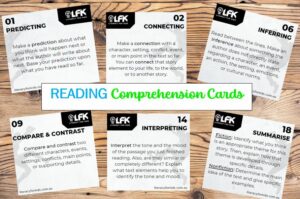
Student Comprehension Cards
Check out our blogs for more ideas and tips.
Identify Comprehension Gaps with these great cards
Steps to Successfully Support Disengaged Learners
See us featured in The Educator Australia magazine
Research confirms that early reading boosts literacy
Boys Love LFB – Here’s what they have to say!
Get boys reading in the digital age
Why write? Tips for reluctant writers
Brought to you by Tanya Grambower

